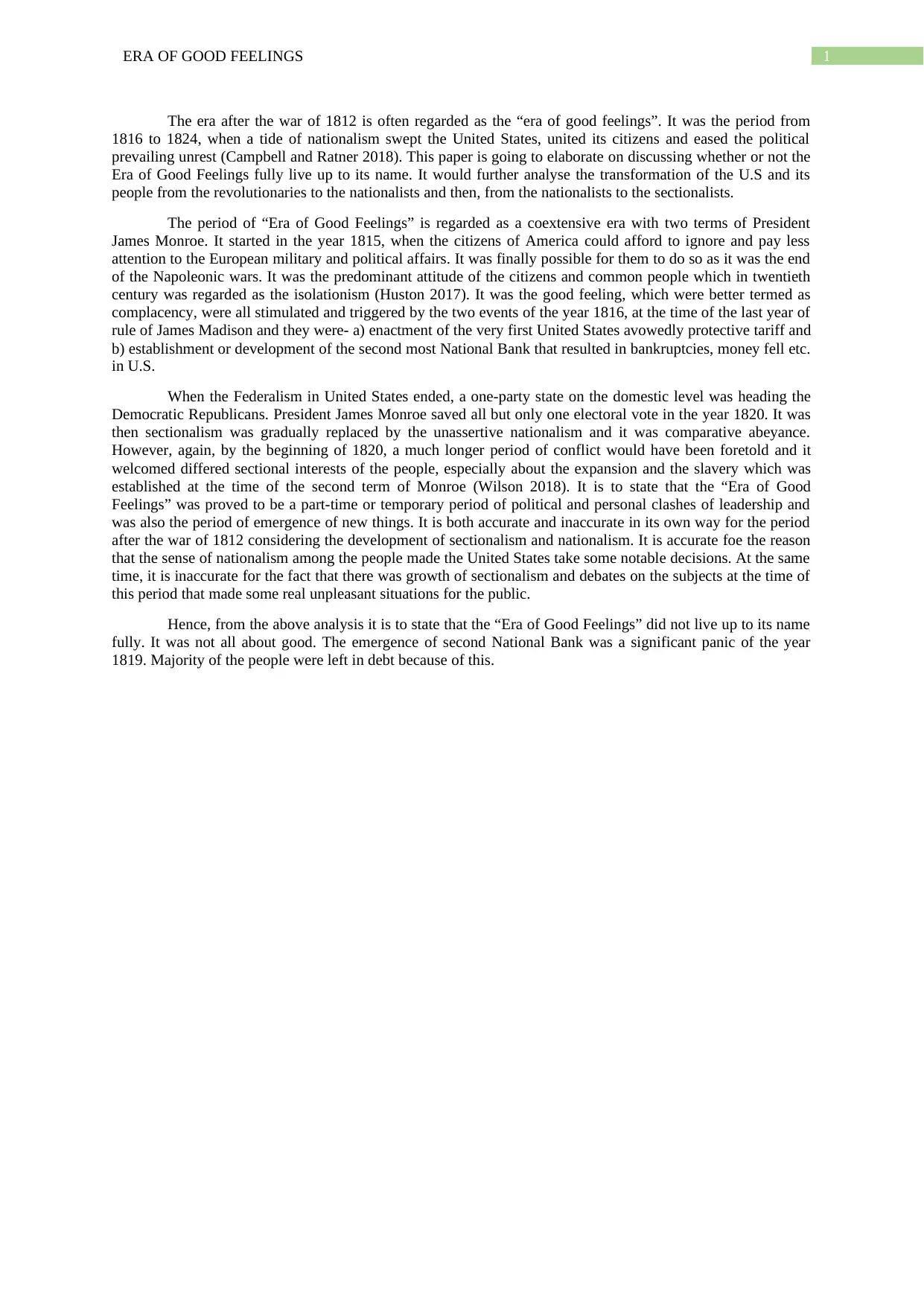The Complexities of the Era of Good Feelings: Nationalism and Beyond
VerifiedAdded on 2023/04/24
|3
|700
|100
Essay
AI Summary
This essay examines the Era of Good Feelings (1816-1824) in the United States, questioning whether it truly lived up to its name. It delves into the surge of nationalism following the War of 1812, which initially united the country and minimized political unrest. The analysis considers the influence of President James Monroe's terms and the impact of events like the enactment of protective tariffs and the establishment of the Second National Bank. While the era saw a decline in Federalism and a sense of national unity, the essay also highlights the emergence of sectionalism, particularly concerning issues like slavery. Ultimately, the essay argues that the Era of Good Feelings was a temporary period marked by both progress and underlying conflicts, concluding that it only partially lived up to its idealistic title.
1 out of 3










![[object Object]](/_next/static/media/star-bottom.7253800d.svg)